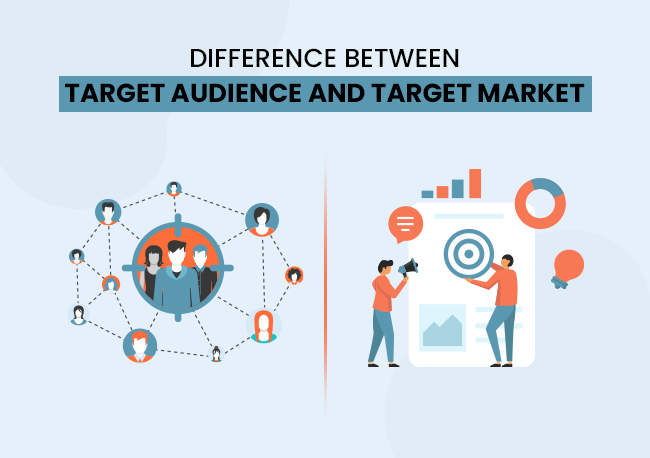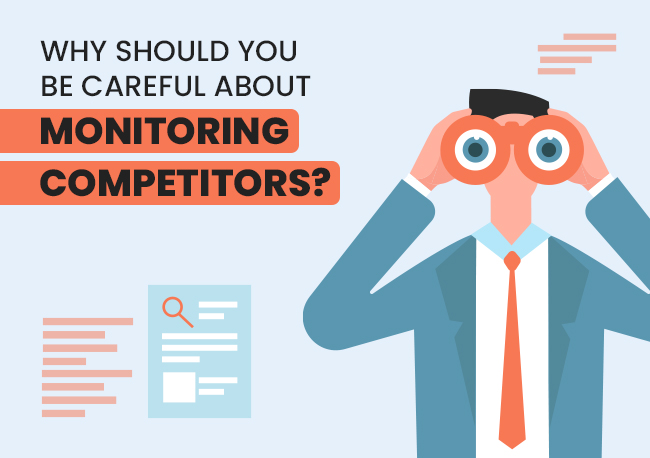“Target Market and Target Audience.”
Do you also assume these two terms are similar?
Well, dear reader, sorry to burst your bubble. These two terminologies are like day and night apart.
Forming such misconceptions is natural as the digital marketing umbrella is surrounded by countless colloquial phrases and terminologies that might sound similar but are not.
This new discovery would have certainly raised numerous questions in your head, like what is the difference between the target market and target audience, how do you identify them, and is the segmentation even necessary?
Gear up and read through this write-up that will answer all the questions bombarding your head.
What is Target Market?
The term ‘target market’ can be defined as a broad range of individuals who are targeted for selling your products or services. They can also be recognized as potential customers who search and purchase products or services similar to your offerings.
The target market is generally segmented with demographics such as –
- Age
- Gender
- Language
- Location
- Ethnicity
- Income
- Education
- Marital Status
- Occupation
To give you an in-depth understanding of the target market, here’s an example. You might have heard about Bath and Body Works. Although, if you haven’t, it is a globally popular personal care and home fragrance brand with numerous fragrances, body care products, etc.
Assume a similar brand is planning to launch a new fragrance, ‘Cherry Blossom,’ which is why they conduct market research to gather information such as age, gender, income, location, preferences, lifestyle, and purchase pattern.
Upon their research, they identified their target market as floral and dreamy fragrance lovers aged 18-35 residing in urban areas with moderate to high income.
Finally, they prepare a strategy utilizing these insights and launch a campaign promoting their new line of products. Besides offering the authentic yet subtle scent of the ‘Cherry Blossoms,’ the brand also enhanced the packaging by giving it an entirely unique look.
Also Read: What Is A Website Name?
➢ Importance of Understanding Target Audience
Choosing and understanding your target market can pave the way toward achieving a desired goal. You can focus on your marketing efforts, get to know more about your target market, improve services or product development, tap into the pool of new marketing opportunities, and offer customer satisfaction.
Since you are familiar with the topic of the target market, let us enlighten you with the nuances of the target audience.
What is Target Audience?
Target audience refers to a range of people who are sure to purchase the brand. Basically, this chunk of people is narrowed down from the target market and specifically aimed to focus on marketing and sales efforts.
The following example will sketch a vivid picture of what exactly is the target audience.
Let’s assume a brand similar to Apple is planning to launch its new smartwatch. After a detailed evaluation of their market, they have segregated the group as fitness enthusiasts and working professionals aged 25-40, aiming to build a healthy lifestyle and track their daily activities.
As they are already aware of their target audience, the next step is mapping out the strategies to encourage the interested audience to take action.
The detailed analysis helped them assess and customize the campaign according to the requirements of their target audience. The campaign highlighted amazing features of the smartwatch, such as sleek design, customizable dial, long battery life, IPX 7, activity and sleep tracking, and so on, to create product awareness while fulfilling the target audience’s needs.
Defining the target audience and tailoring the campaigns associated with their pain points doubled their sales, sold out all the watches, and even increased the demand for the product.
Also Read: 15 Best Websites For Entrepreneurs To Follow
➢ Importance of Understanding Target Audience
Your business can also climb up the graph by determining the target audience!
Not only will you positively impact the decision-making process through personalized campaigns referring to their needs, but you also will be able to choose the right channels to form communication, such as Business SMS, to ensure direct and timely engagement. This approach helps showcase what they are looking for, improve your products & offerings, and form long-term relations.
So far, we’ve discussed the target market and audience with examples. Now let’s explore how they differ.
What is the Difference Between Target Market and Target Audience?
| Target Market | Target Audience |
| 1. The target market refers to a wide range of people | 1. Target audience refers to a segmented or specified audience. |
| 2. The primary intent is to target and serve the overall market. | 2. The main goal is comprehending the customer persona to plan the marketing & sales efforts. |
| 3. Stakeholders, distributors, buyers, etc., influence the target market. | 3. The final purchase decision is directly dependent on the target audience. |
Until now, we have illustrated the difference between the target audience vs the target audience. Next, we will show you how to determine the target market and audience.
Also Read: Blog VS Website: The Difference You Need To Know As A Beginner
How to Identify the Target Market?
Here are the 4 best ways to Identify the target market for your business.
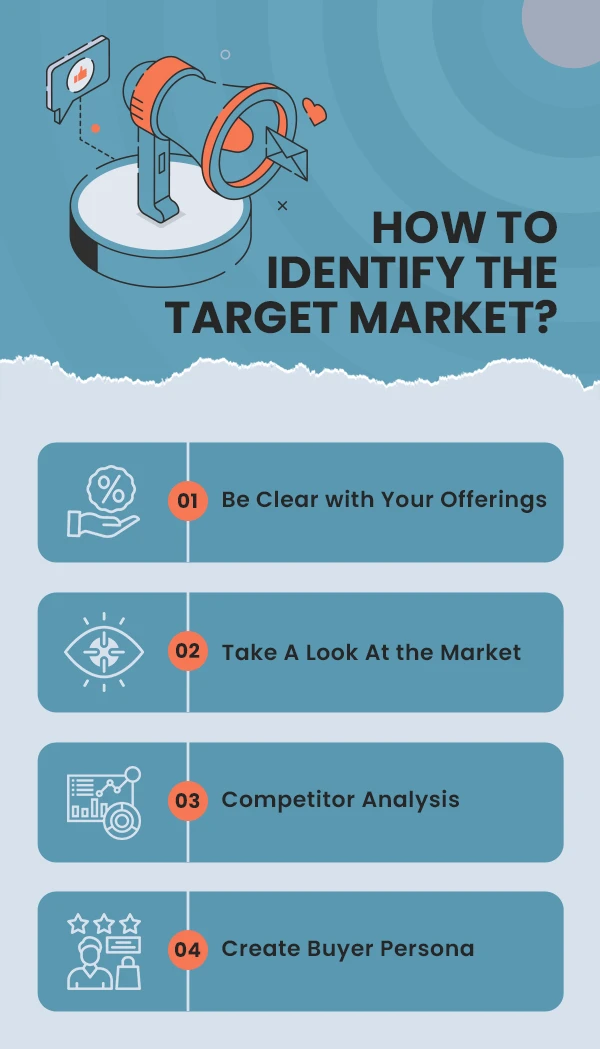
1. Be Clear with Your Offerings
The foremost vital step to identifying the target market is clearly defining your offerings. Describing your offerings evidently will help the audience learn about your business, the perks of your products/services, and how they can help them.
Furthermore, this assures them you are professional and well-informed about your field.
For instance, you have a makeup brand, wherein you recently launched a new mascara range. After spending hefty bucks on marketing, very few individuals purchased the product. Wondering why? One of the reasons could be the undefined characteristics of the mascara.
Shoppers were not sure of how the product could benefit them. Was it for volumizing or lengthening? Is it sensitive to eyesight? Such undefined product descriptions can negatively impact their decision to purchase. Hence state the purpose of your product vividly.
2. Take A Look At the Market
Market research is the second most important factor for recognizing your target market. This helps in gauging the dynamics of the market, including what they want and like. This also helps you evaluate your competitors.
Besides gaining information on the current trends and demands of the market, it also helps you determine your potential target audience.
From age to gender and purchase patterns to psychographic details, accumulating in-depth data will help you segregate the target audience.
Let’s assume your business is about selling wheelchairs. You gather types of wheelchairs, which are highest in demand, what features the wheelchair should have, and who needs them the most.
3. Competitor Analysis
Staying at the top of your game equates to beating your competition.
The question is how?
The secret to staying ahead of your competition is knowing about them. From evaluating their target market to understanding their offerings and everything in between, you need to gather all the information to differentiate yourself from your competitors.
For example, you are a sports shoe brand whose competitor is Nike. Since you are already aware of your competitor, the next step is acquiring insights on their target audience, products, style, packaging, brand messaging, ads, competitive pricing, customer reviews, and social media presence to prepare a better strategy and gain a competitive advantage.
4. Create Buyer Persona
Simply put, a buyer persona is a digital marketing term used for creating detailed profiles of your target audience. Even though the profiling is fictional, the analysis helps you learn in-depth about your target market and potential audience.
This description generally comprises age, gender, occupation, annual income, location, purchase patterns, interests, etc. Creating a buyer persona not only provides meticulous details on your target market and audience but also enables you to form effective strategies and personalized ads which can be targeted to the right market.
Supposedly, you are a Gen-Z fashion brand with a pre-determined target market. You limit your research within the market to establish your target audience and form profiles.
Here’s what a customer profile would like –

Considering that you are well aware of how to identify the target market. Let’s understand how you can identify your target audience.
How to Identify the Target Audience?
Here are the 4 best ways to Identify the target audience for your business.
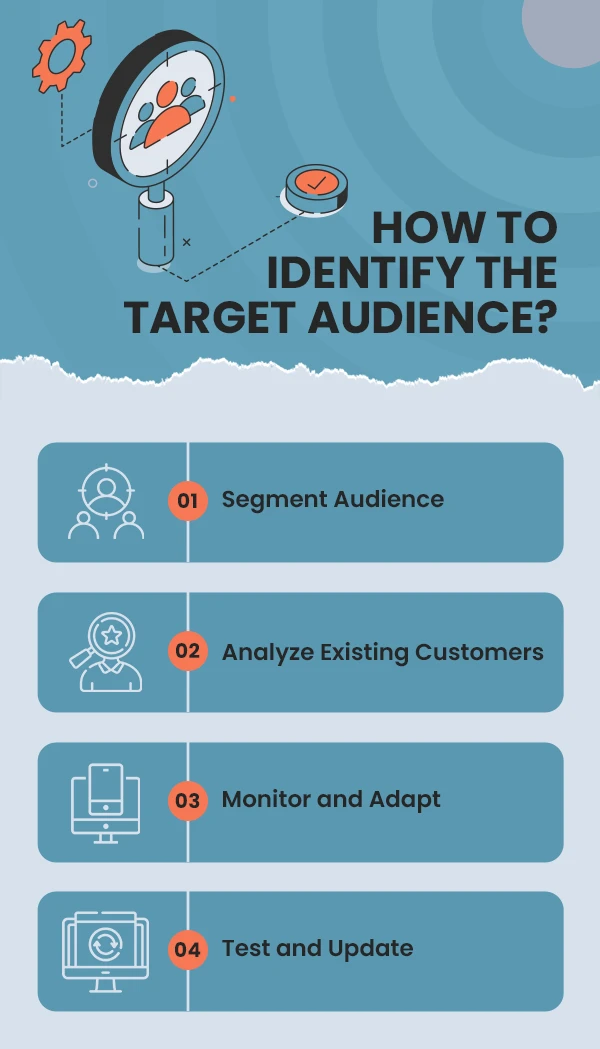
1. Segment Audience
Once you have assessed your zone of action, the next step calls for segmenting the target audience from the market. Basically, you have to scrutinize the market and choose the ones who are sure to make a purchase or invest in your services.
What does Segmentation of Audience Depends on?
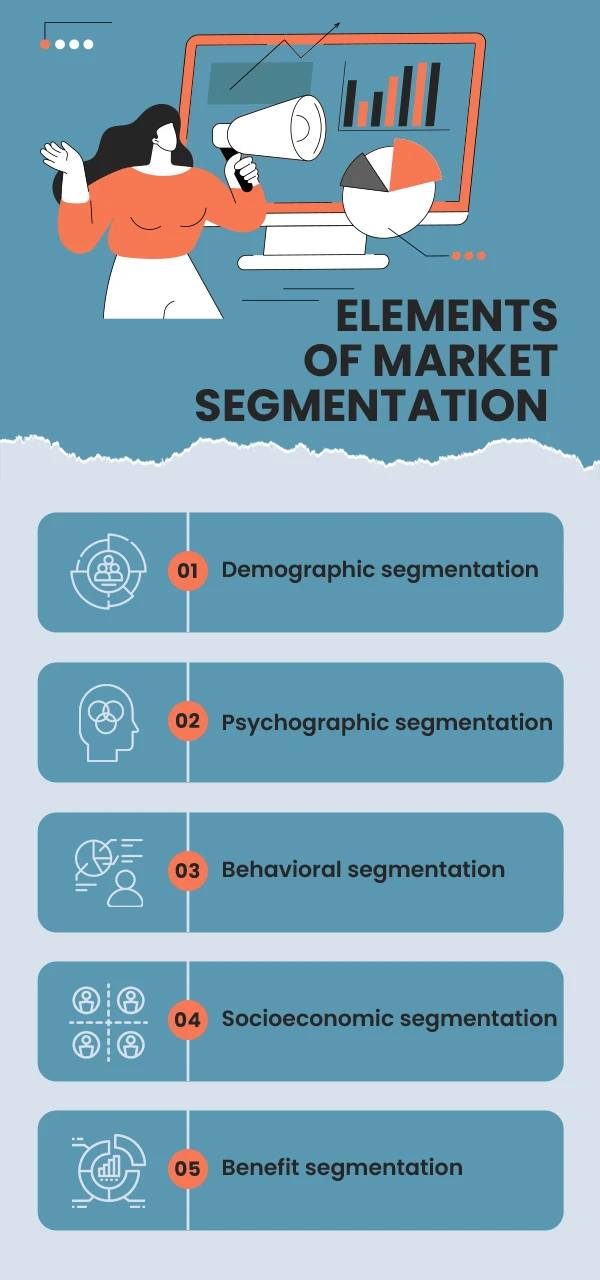
Such segmentation enables you to create personalized messages, offerings and choose the right communication channels to reach and interact with your target audience.
For instance, you own a gym and have already gathered data on your target market. Now all you have to do is segmentation.
➢ Demographic segmentation
For starters, you will segment the audience into different age groups, gender, and location.
➢ Psychographic segmentation
Next, you will segregate the audience based on their fitness goals, lifestyle, and experience in the field.
➢ Behavioral segmentation
This segmentation will be based on their overall preferences. You will focus on their preferred workouts and how often they engage in physical activity.
➢ Socioeconomic segmentation
Following that, you will divide your audience according to their income level and occupation.
➢ Benefit segmentation
Last but not least, you will segment the audience according to their benefits, such as convenience, facilities, and price range of the gym.
2. Analyze Existing Customers
This pointer is specifically for business owners with existing customers. Understanding the needs and preferences of your existing customers can pave the way for generating new customers.
You can compare current insights with newer ones to comprehend the purchase patterns and channel your marketing efforts in the same direction.
For instance, you are a lingerie brand with a prevailing target audience that includes females aged 15-45 years with moderate to high income. However, you plan to promote a new range of designer lingerie between the same age and gender.
Since this is an exclusive collection, your audience will also get narrowed down. Although you can evaluate and compare the characteristics of old and new audiences and form a results-oriented strategy to achieve your desired goal.
3. Monitor and Adapt
Staying relevant in the market equates to social listening and following trends. Following these two will help you walk parallel to the evolving needs. You can engage with your target market by checking out their reviews, ratings, replying to their comments, interacting on social media, and fulfilling their needs.
You also have to closely monitor the market and its current trends for the consistent growth of digital presence.
For instance, there are two movie theatres opposite each other. While the first has a legacy cinema screen with traditional seats, the latter has a 3D and rear projection screen with reclining seats.
Who do you think will have more movie buffs? Of course, the second one. Because it adapted to the current needs of the market, while the first failed to upgrade its offerings and amenities with time.
4. Test and Update
Have you ever launched a website or demo product online to see how the audience reacts and responds? Offering a product or website for testing purposes to your target audience is one of the best ways to collect honest feedback and recognize the areas of improvement.
For instance, Google has recently created a prototype called Bard as a competition to ChatGPT. However, prior to the final launch, Google provided access to a certain range of people to get an up close and personal experience of AI and suggest their feedback.
Their idea behind this strategy is to collect audience feedback and upgrade the tool based on the suggestions.
Also Read: What Are The Benefits Of A Website For Small Businesses
➢ How is Market Segmentation Different From the Target Market and Audience?
Market Segmentation, Target Market, and Target Audience are three different birds of the same nest. Meaning these three are interrelated concepts sharing distinctive meanings.
➔ Market Segmentation – The term ‘Market Segmentation’ refers to breaking up the market into audiences. Technically, this process is about funneling the market and choosing the refined ones who will certainly purchase from you or invest in your services
Market segmentation can be conducted by defining the audience into numerous categories such as demographics, psychographics, socioeconomic, behavioral, geographic, etc.
➔ Target Market – This digital marketing term refers to a broader range of people in a particular market that a business aims to serve with its products or services.
Unlike the other two, the target market is wider identified through factors like segment size, growth potential, profitability, the company’s capabilities, and its marketing objectives.
➔ Target Audience – Think of a target audience as a cohort of individuals to whom a company specifically targets its campaigns and messaging. They are the filtered audience who can be targeted and connected with channels such as advertising, social media, events, or direct emails.
Overall, market segmentation is a way of funneling and separating the target audience from the target market.

Frequently Asked Questions
Indeed, they are. Both of them are necessary for you to channel your marketing and sales efforts to the right people.
Absolutely not! Every product, service, industry, and market is different; why expect to have the same audience for all of them?
Yes, it is possible for the target market and audience to be different for different marketing campaigns. It generally depends on product variations, geographic considerations, communication channels, personalization strategy, etc.
➔ Primary target market: Primary target market is where a company directs its entire focus on a particular audience to sell its products or services. They are the primary source of generating sales, and the company centralizes its resources, marketing, and sales efforts on them.
➔ Secondary target market: Secondary market is the additional set of individuals with potential value and relevance. However, they are not the primary focus of a company. All of the marketing and sales efforts are mainly diverted toward the primary market.
Wrap Up
You can kickstart a business and aim to achieve a desired goal. However, it won’t be successful until you define your target market and audience. They are the cornerstone, helping you scale, increase sales, and pave more opportunities for a successful business. Hence always prioritize them and remember, they are two worlds apart!
